BSS058-6 Strategy and the Global Competitive Environment Assignment Sample
Module code and Title: BSS058-6 Strategy and the Global Competitive Environment Assignment Sample
1. Introduction
“Strategic value proposition” refers to the overall strategy of marketing of the healthcare company named Urbancos. The aim of the report is to recognise the strategic advantage of “Urbancos” by assessing the target market of the firm. The firm is providing health care services in Norway, Netherland and Switzerland. The utilisation of the STP model and 4P’s strategic marketing tools are used to assess the operational advantage and strategic promotional planning.
In order to analyse the strengths of the company, the weak areas are required to be evaluated. Therefore, “strategic value proposition” is beneficial in analysing the areas of concern for entering into the target market. Moreover, the competitor analysis is done through the evaluation of the business models of competitors. The key trends in the healthcare sector and justification for selecting the strategic position of the company are stated along with the illustration of the selected value proposition.
2. Main discussion
Strategic analysis of the firm aids in comprehending the financial and physical resources of the firm to evaluate its strengths. A growth strategy assists in creating an appropriate plan to address the recent sinuses and future risk with an effective mitigation method
2.1. Segmentation and targeting
STP model
The target market analysis accentuates the possibility of mitigating the most potential three factors including “segmentation, targeting and positioning” with the STP Model application. In this recent report, the analysis determines the healthcare sector related to the Urbancos Company. The company focuses on different target markets, such as – Switzerland, Norway, and Netherlands.
All these particular implementations assure the STP Model analysis in the categorical context with the help of potential assessment in the worldwide nation, especially for markets available in Switzerland, Netherlands, and Norway (Elavarasan and Pugazhendhi, 2020). Therefore, the present company analysis of Urbancos accentuates the possibilities for more understanding of capturing 50%-60% of the target market as contrary to the other potential market competitors.
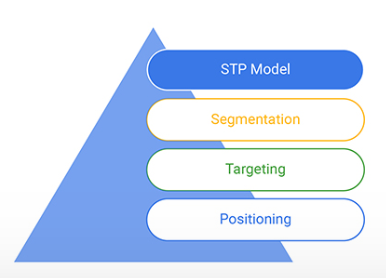 Figure 1: STP Model to Evaluate Target Market (Source: Campbell and Brauer, 2020)
Figure 1: STP Model to Evaluate Target Market (Source: Campbell and Brauer, 2020)
Segmentation
The healthcare sector, especially the referred pharmaceutical company Urbancos concentrates on the demographic detailing along with the psychological variations related to the target market (Khorasany et al. 2018). Moreover, the segmentation accentuates the necessity of behavioural factors with brand loyalty, medical speciality, cost and distribution intermediary. This segmentation process mainly determines the context of people belonging to 20 years-40 years the age group and the people aged above 50 years.
Urbancos also takes into consideration the effective gender sequences of female and male service-takers and the “middle social class”. Moreover, all these three places assure the tendency in managing the proficient high-income groups, such as – 124,000 CHF- 31,300 CHF in Switzerland, 155,000 NOK-612,000 NOK in Norway, and 2,800 EUR-3,500 EUR in the Netherlands.
Targeting
In addition, the above-mentioned illustration further shows the targeting purpose. The targeting proposition always undertakes the credentials to accommodate the target market, in this context, the medication services (Nosratabadi et al. 2019). High competition, “selling a huge number of units”, and OTC or “Over-the-counter medicine” products are the collaborative measures for Urbancos.
As per pharmaceutical production, the company can generate and produce their medicinal terms using the different branches of the Oncology department and Autoimmune treatment services (Novoveská et al. 2019). Moreover, this company can also generate a paediatric division to produce and sell baby foods for capturing almost 75% of the healthcare market in different European nations.
Positioning
The positioning system according to the STP process undertakes the tendency in mitigating the different practical contexts for Urbancos in targeting the Netherlands market along with Norway and Switzerland. There are 4 types of segmentation processes to mitigate the necessity of accepting the position of the target market. These factors include benefits, occasions, competitors and hybrid positioning.
The benefits determine the service provision and necessary interchanges with contributing to the lower-income and middle-income groups along with the high-income groups. In contrast, the occasion concerns the emergencies, such as – the Covid-19 pandemic that affected the entire world with an effective health decline rate. Alongside, the competitors are Medbase AG in Switzerland, Pfizer in Norway and Abbott in the Netherlands. Henceforth, the hybrid positioning reflects the merging of pharmaceutical groups [Refer to Appendix 1].
4P Analysis of target market
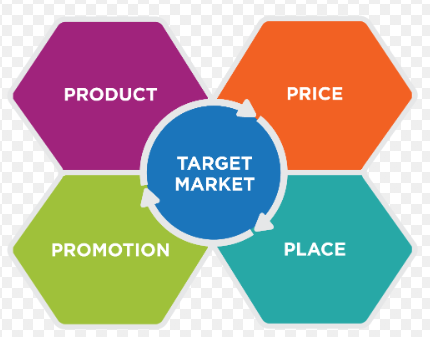 Figure 2: Factors of 4P analysis (Source: Zutshi et al. 2021)
Figure 2: Factors of 4P analysis (Source: Zutshi et al. 2021)
Product
The products delivered by healthcare companies include medical tools and services based on different health conditions. Urbanicos produces medical products to hospitals and patients such as apparatus, medical appliances, medical software, “reagents for in vitro use”, medicines, and “diagnostic and surgical machines” (Herrmann et al. 2018). The company targets medical markets that require updated medical gadgets and technologies for improving their medical facilities.
The company ensures that the medical products have licensed marks that reflect the relevance of products. The machines and technologies provided to hospitals are required to have long-term durability since the diagnostics machines are constantly in use. Moreover, the company ensures the medical services such as blood tests and blood pressure tests that are ordered by customers through the digital platforms (Oderanti et al. 2018). The home delivery of medicines is also done within the scheduled time in order to provide customers with desirable medical services [Refer to Appendix 2].
Price
The price structure of medical products, as well as services depends on the medical requirements and costs involved in the chemical composition of the medicines. The company estimates to increase the prices of medical products every 5 years by up to 3% to 6% based on the increase in the manufacture costs of medical drugs and medical tools. The price structure of diagnostic tools of the medical industry varies from country to country and the technological advancements made in the machines.
The average cost of diagnostic tools range from $5000-$30000 and the cost of medicines are based on the chemical composition and availability of the medicinal requirements. As affirmed by DiRomualdo et al. (2018), the average cost of manufacturing medicines within medical factories range from $6000 to $7000 per batch of medicines. The “cost-led pricing strategy” is utilised by the company for structuring the product prices as this strategy is helpful in ensuring the relevant profit rate.
Place
The selection of places for distributing medical products and services depends on the market segmentation strategies of the company. Urbancos focuses on expanding the healthcare business on the global platform and hence, it is structuring the requirements for global expansion. The market segmentation is initiated with the identification of the strengths and weaknesses of the target market.
The healthcare market requires huge stock availability and hence, the supply chain management of the medical goods and services is crucial. According to Ghobakhloo, (2020), the countries including Netherlands, Norway, and Switzerland are the best markets for market segmentation of start-up healthcare companies since these markets have provided improved healthcare facilities to customers and these are also population-oriented places.
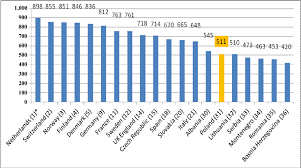 Figure 3: Quality management of healthcare services in different places (Source: Statista, 2022)
Figure 3: Quality management of healthcare services in different places (Source: Statista, 2022)
Promotion
The promotional activities in the healthcare sector are significant in recent times since the competition within the healthcare industry is growing rapidly across the world. The utilisation of digital platforms is helpful in promoting healthcare products and services. Since the healthcare industry is the most demanding and fast growing industry, the digital promotion of medical services can attract more customers worldwide.
The company can promote its products through digital advertisements on the online applications and official websites (Ghobakhloo and Iranmanesh, 2021). The medicine details are provided on the official websites in order to provide customers with the information about the chemical composition and product uses. The facilities of discounts and online transactions are also attractive to the customers.
Business model analysis
The necessary changes that concern the healthcare industry in these three target markets are effective with appropriate commercial targets. Approximately, 60 mergers in the pharmaceutical context for the Netherlands, along with in Norway 6 companies, such as – DNV or “Det Norske Veritas” and GL or “Germanischer Lloyd” form the competitor’s groups more subtle and effective for Urbancos. In contrast, in Switzerland also for “Hoffmann-La Roche” with an effective revenue generation rate of up to $53,427- $94,052 million overall justifies the pharmaceutical competitive groups and their projections effectively.
Thus, the credentials in the global market undertake several opportunities for the management criteria in maintaining the business ethics with proper evaluation (Di Vaio et al. 2020). The suggestive measures always try to ensure the developing revenue services and a better sales structure with a proper association in the real market scenario.
All these associated contexts mitigate the effective merging and acquisition facilities for assuring the competitor’s group in the practical context. The assessment determines several references to the healthcare industry’s competition with the companies, such as – Switzerland’s Novartis or Lonza Group, Norway’s Gilead Sciences or Sanofi, along with the Netherlands’ AstraZeneca, Amgen or “Bristol Myers Squibb” in the recent target market.
The tendency to accentuate the value proposition in making the consumers more attracted to the vaccines and medicines are an effective business model for these recent healthcare competitors. Therefore, global emergencies, such as – the global pandemic due to Covid-19 assure this competitive market scenario with more advancement criteria.
The “connected medical billing” is digital software to keep records of the medical bills regularly and the HIS system is a digital system designed to maintain healthcare data. The medical data is protected within this system. According to Abdel-Basst et al. (2020), the “health collaboration tools” help medical companies to share medical files, synchronize documents, cloud storage, whiteboards, and videoconferencing.
The “healthcare ERP software” is a tool for business management which stores information about organisational operations such as production capacity, purchasing and orders, cash flow, and payroll. The global economic growth of the healthcare sector through digital transformation is estimated to reach $210 billion by the year 2025.
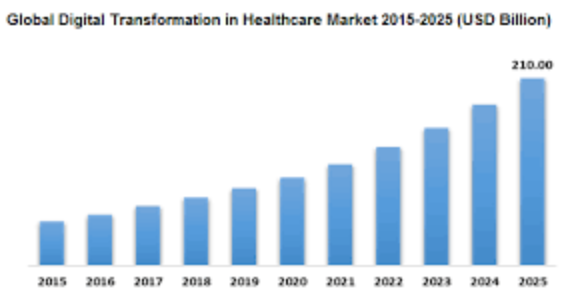 Figure 4: “Global digital transformation in healthcare sector” (Source: Statista, 2022)
Figure 4: “Global digital transformation in healthcare sector” (Source: Statista, 2022)
2.2. Evaluation and justification of selected strategic position of the company
“Bowman’s strategy clock”
Eight strategic positions of the company are identified and evaluated in the study that are listed below.
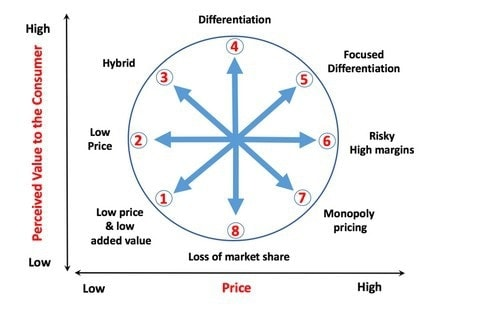 Figure 5: “Bowman’s strategy clock” (Source: Schiavone et al. 2021)
Figure 5: “Bowman’s strategy clock” (Source: Schiavone et al. 2021)
“Value added services”
The “value added strategy” focuses on increasing the sales rate through value added products, as well as services. As a start-up healthcare company, Urbancos is required to deliver medical products at the lowest possible prices in order to attract more customers. However, the product quality need not deteriorate since it may generate a competitive disadvantage (Kumar et al. 2021).
In order to obtain a competitive advantage, the company is required to analyse the strategic positions of its rivals and implement innovative healthcare strategies. Since the customers of the target markets thai is; Netherlands, Norway, and Switzerland are quality oriented, the company needs to position itself as a quality-driven healthcare company.
Low price
The price structure of healthcare products are similar among different healthcare companies and hence, the company needs to structure its product prices at a low rate in order to grab the attention of more customers. The company needs to provide its customers with attractive discounts for their first purchase (Schiavone et al. 2021). The discounts in healthcare facilities are effective in generating a good customer base and helps in retaining the number of customers and sales growth.
Hybrid
The strategy of “hybrid positioning” helps healthcare companies to create value among the customers regarding the services provided by the company. The company can implement hybrid strategy by ensuring lower costs compared to the rivals. Moreover, the leadership strategies required for effective position in the healthcare market on the global platform. The employee management, as well as customer feedback is crucial for the value adding process of the company. The main objective of utilising the hybrid strategy is the maintenance of flexibility, as well as agility of the company.
Differentiation
The product differentiation ensures the brand image of the company in the target markets. In order to maintain a good brand image among the customers of Netherlands, Norway, and Switzerland, the company is required to focus on cost differentiation along with implementing unique product features for customer satisfaction (Schiavone and Leone, 2022). The customers are satisfied only when the healthcare facilities are durable, and effective in medical solutions. Both the price structure, as well as product features of healthcare goods and services ensures market differentiation.
Focused differentiation
“Focused differentiation” is a different strategy compared to the other strategies discussed above. This strategy includes the structuring of product prices at a high rate along with the maintenance of product quality. This strategy can be implemented by the company to generate high brand reputation in the target market since customers believe that expensive products are more effective than the cheaper ones (Chakraborty et al. 2019). Thus, the company needs to use quality manufacturing tools for medicine packaging along with the quality maintenance of the medicine [Refer to Appendix 3].
Risk margins
The risk margins demonstrate that in order to enter a new target market, there are immense possibilities of risk emergence. Therefore, it is important for the healthcare company to analyse the market trend and predict the risks that may emerge during the healthcare practices in target markets. Along with the risk prediction, risk mitigation strategies are also required to be structured prior to initiating the healthcare practices.
Monopoly pricing
The monopoly pricing determines that a single organisation is able to control the products and pricing. On the other hand, this strategy demonstrates that the other marketing aspects such as value, competitors, and price points are not very important (Patrício et al. 2018). The strategy further states that the company needs to pay more attention to the internal factors instead of external factors.
“Loss of market share”
The market share plays a significant role in maintaining the market position of the company. In case the company loses its market shares in the target market, there is a high risk of market decline and loss of product value among the customers (De Mora, 2019). Therefore, the company is required to manage its market shares effectively in these target markets.
2.3. Value proposition
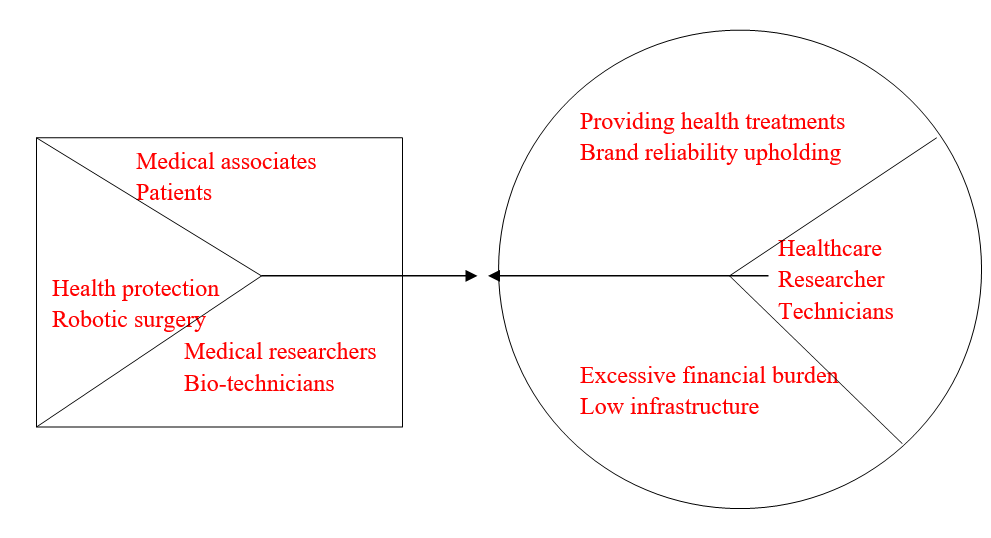 Figure 6: Value Proposition (Source: Self-created)
Figure 6: Value Proposition (Source: Self-created)
Gain creators
The gain creators as per Urbancos associate the medical executives for providing the healthcare services and authentic medical assistance for the masses. Alongside, the effectiveness of all the patients suffering from different diseases can get standard treatment to live a proper life ahead in their future. Urbancos associates the gain creator controls in the global context for launching different service provisions with acute healthcare services.
Product and Services
The product ranges include the health protection with proper diagnosis and medication services. Moreover, the service structure also associates the robotic surgeries in the professional medical assessments. It is important to mitigate difficult heart surgeries, neurological operations, and internal disease procurements (Wickramasinghe and Zelcer, 2022). The significance concerning the products with immediate benefits, and long-term survival strategies for the patient is important proposition as per the value structure.
Pain Relievers
The pain relievers are primarily the medical researchers who researches on new medical and drug compositions for better healthcare system and make the treatments easy for doctors. Alongside, the bio-technicians also provide how to store the expensive drugs and the new chemicals that are required to store or refrigerate by Urbancos.
Mitigated evaluations for relieving the pain from patients with several diseases can get some relief from the medicines, solutions, or vaccines launched by the pharmaceutical agencies (Price and St John, 2019). The pain reliving compositions and the medical assistance associates the necessary changes in different service structures and their suggestions with healthcare potential.
Gains
The gains of different medical assessments are effective in associating the brand reliability as per the profit venture. The patients also receive timely treatment that can save their life on time. The emergency services are important in mitigating the gains, such as – vaccination process at the Covid-19 pandemic situation in the global context. The profit structure of Urbancos’s brand value associates the gains for the service-providers and the patients receiving the service. Different automated services include quick diagnosis, medical tests and the necessary changes are effective for creating the emergency more controlled and manageable.
Pains
Some involved pains are also effective in this context. The patients often suffer from excessive treatment charges along with the pharmaceutical companies like Urbancos with financial lack in launching new medicines in target market. Furthermore, the less-developed infrastructure is also responsible for the pains as per the value proposition. All these negative factors need some emergency controls and resolutions for making the situation positive for all sufferers and the service-providers.
Customer Jobs
The jobs that generally the customers can take up are of healthcare personals, researchers, and the technicians for laboratories or operation theatres. These necessary interchanges in job role are appropriate for taking up in the target market context related to any pharmaceutical industry (Wickramasinghe and Zelcer, 2022). Multiple options for managing the situation in a better way make the possibility more useful in creating employment options.
The associations are also effective in making the healthcare credentials successful for capturing the target market with internal and external benefits. Thus, the optional job roles make the people to be engaged with the immediate changes and making the medical infrastructure better with automation and self-services.
The “value proposition canvas” is useful in designing the strategies for value proposition for the healthcare sector. This canvas pays attention to the issues faced by customers in terms of medical services and work for solving the issues (Schiavone and Simoni, 2019). The problem resolution of customers helps healthcare sectors to enhance their relationships with customers and make them feel valued. The benefits of the “value proposition” are listed below.
Improvement of marketing outreach
Before the launch of any new healthcare product, the company is required to structure its branding and marketing strategies. According to Mohd Satar et al. (2019), the advertisement activities implemented by the company helps it to promote its products and services and reach the customers of the target markets. The depiction of brand reliability and product quality to the customers is beneficial in grabbing the customer attention and achieving a competitive advantage in the target markets.
Moreover, this canvas helps in identifying the customer requirements and planning actions for meeting customer demands, as well as market demands of the target market. The 3D painting also helps during the execution of transplants, as well as prosthetics and hence, it is in high demand in recent times. AR technology does not create an entire new environment, however, it adds value to the existing environment in order to alter the experience of the user (Presch et al. 2020).
The AI technology is the most demanding technology within the healthcare sector since it influences smart medical activities. One example of artificial intelligence within the healthcare sector is robotic surgery which influences “less blood loss”, quicker recovery, and “shorter hospital stays”. The IoT technology creates a connected network for exchanging medical data and helps in monitoring remote patients, “digital supply chain”, inventory control, and digitized operations.
Drones are used to predict emergencies and respond to disasters, and drones are also used for delivering medical goods. Zutshi et al. (2021) claimed that blockchain is regarded as a “distributed electronic ledger” that can enhance records security and ensure successful transactions. It also helps in prevention of frauds, and protects the identity of customers by providing them with “personal health protection (PwC)”.
Focused planning
Value proposition influences healthcare companies to initiate focused planning by studying the marketing strategies of rival companies. The guidance regarding relevant marketing tools and strategic implementations can be obtained through competitor analysis which adds value to the brand reliability of the company.
Customer involvement
The company is able to achieve customer involvement by focusing on customer-oriented medical products, as well as services. Customer satisfaction plays a significant role in achieving value propositions in the target market. In case the customers do not find the healthcare services uninteresting, the brand value may deteriorate (Grey and Donnelly, 2022). Hence, there is a requirement for providing customers with effective discounts and offers for their first healthcare purchase from the company. The company is required to provide value propositions in both the offline, as well as online platforms in order to increase its overall annual sales and customer base.
3. Conclusion
Based on the entire discussion, it is concluded that the value proposition of the start-up healthcare company named Urbancos is significant before initiating the business in the target markets. The company has selected the healthcare markets of Netherlands, Norway, and Switzerland for expanding its healthcare business. In order to increase the customer base of the target market, it is crucial for the company to analyse the positive, as well as negative aspects of the healthcare industry of these countries.
In the course of identifying the strategic opportunities in the target markets, the evaluation of key trends in the recent healthcare sector is helpful. The key trends demonstrate that in recent times, the digital transformation, advanced technologies, and pharmaceutical supply chains are mostly adopted by healthcare organisations.
4. Recommendation
Recommendations discuss the important strategies that can be incorporated in order to gain a competitive advantage and sustainable profit in the target market. Identification of the business model of the rival companies and assessing the market trend of the healthcare sector can help Urbancos in improving the strategic position of the firm (Johnsen, Å., 2021). Additionally, transforming the supply chain in order to address the transformation of the target market is necessary to have a positive outcome.
Identification of competitor groups’ business models
The different business models are reflective of the contextual analysis in the market sector for any business industry. The competitor group’s observation is for appropriate business models in contrast to Urnancos. In this recent report, the focus is applicable to the competitor group’s usability of the “customer-centric business model” (Herrmann et al. 2018).
The necessity associates the necessities for further motivation in augmenting 60%-85% of the market capture. In different nations as the target market, such as – the Netherlands, Switzerland and Norway conduct many healthcare companies compete against Urbancos.
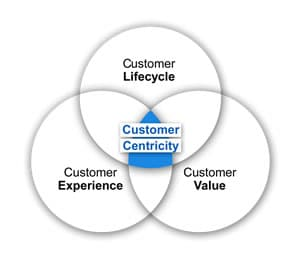 Figure 7: Customer-centric Business Model (Source: Nosratabadi et al. 2019)
Figure 7: Customer-centric Business Model (Source: Nosratabadi et al. 2019)
The associated ventures concerning the competitor groups mitigate a standard market demand by possessing a sales rate of up to US$349.70 million in Switzerland, NOK67.770 in Norway, and USD 570.0 million in the Netherlands. All these target markets determine a definite challenge for Urbancos as a potential pharmaceutical company in the recent context (Lee et al. 2019).
The consumer-centric approach is applicable to ensure “value-based healthcare” units for the companies with implemented AI and NLP or “natural language processing” for making the consumers easy in accepting the company policies and their assessment details. The measurable changes that are important in associating the financial context with merging facilities are significant contexts altogether.
Identification of key trends in healthcare sector
The following key trends are identified within the healthcare industry that benefits the company from innovations in strategic management.
Digital transformation
Most healthcare companies are utilising digital transformation in recent times in order to increase their value proposition to their customers. Urbancos is required to evaluate the key trends for matching the level of innovations taking place in the healthcare industry (Ravi et al. 2020). The healthcare companies are using digital processes for executing their daily tasks in order to accomplish the tasks smoothly and on time.
An example of digital transformation in the healthcare industry is “electronic health records (EHR)” software. The EHR software helps the healthcare staff to keep records of patients digitally and update the records as per requirement. Some other examples of digital transformation include “connected medical billing”, “healthcare information system (HIS)”, and “health collaboration tools”, “ healthcare ERP software ”,“ telehealth software.
Emerging technologies
Several technologies are emerging in the healthcare sector in order to make the overall strategic management of healthcare activities easier and faster. Some examples of emerging technologies within healthcare industry include “Virtual Reality (VR)”,“3D painting”, “Augmented Reality (AR)”, “Artificial Intelligence (AI)”, “Internet of Things (IoT)”, “Drones”, “Robots”, and “Blockchain” (Tursunbayeva et al. 2018).
The VR technology is used to provide patients with a relaxed environment by reducing their stress. Patients are provided with VR tools that entertain them and reduce their anxiety. Doctors also use virtual reality during surgeries to have a clear view of the surgical activities. The 3D painting is used for painting the epilepsy medications, customisation of hearing aids, and dental works.
Pharmaceutical supply chain
The “Pharmaceutical supply chain” refers to the means by which prescription medicines are produced, as well as delivered to the patients. In recent times, the medical companies are focusing on providing their customers with the service of home delivery of medicines based on their prescription requirement. This implementation reduces patient’s stress to go to the market and purchase medicines.
As stated by Eriksson et al. (2020), the patients’ orders are recorded through mails and online applications and the medicine delivery time is scheduled based on the medicine availability. However, the management of the pharmaceutical supply chain involves monitoring of several functions such as accessibility of medicinal drugs, transportation systems for medicine delivery, skills for arranging prescribed medicines, and many more.
The steps involved in the pharmaceutical supply chain include “drug counterfeiting”, “cold-chain shipping”, and “pricing of product delivery”. The medical companies are required to store the medicines at cool storehouses for maintaining their durability.
References
Campbell, M.R. and Brauer, M., 2020. Social marketing campaigns to address social problems. The Routledge research encyclopedia of psychology applied to everyday life, pp.608-629.
Chakraborty, S., Bhatt, V. and Chakravorty, T., 2019. Impact of IoT adoption on agility and flexibility of healthcare organization. International Journal of Innovative Technology and Exploring Engineering, 8(11), pp.2673-2681.
De Mora, F., 2019. Biosimilars: a value proposition. BioDrugs, 33(4), pp.353-356.
Di Vaio, A., Palladino, R., Hassan, R. and Escobar, O., 2020. Artificial intelligence and business models in the sustainable development goals perspective: A systematic literature review. Journal of Business Research, 121, pp.283-314.
DiRomualdo, A., El-Khoury, D. and Girimonte, F., 2018. HR in the digital age: How digital technology will change HR’s organization structure, processes and roles. Strategic HR Review.
Elavarasan, R.M. and Pugazhendhi, R., 2020. Restructured society and environment: A review on potential technological strategies to control the COVID-19 pandemic. Science of the Total Environment, 725, p.138858.
Eriksson, E., Andersson, T., Hellström, A., Gadolin, C. and Lifvergren, S., 2020. Collaborative public management: coordinated value propositions among public service organizations. Public Management Review, 22(6), pp.791-812.
Ghobakhloo, M. and Iranmanesh, M., 2021. Digital transformation success under Industry 4.0: A strategic guideline for manufacturing SMEs. Journal of Manufacturing Technology Management, 32(8), pp.1533-1556.
Ghobakhloo, M., 2020. Determinants of information and digital technology implementation for smart manufacturing. International Journal of Production Research, 58(8), pp.2384-2405.
Grey, V. and Donnelly, N., 2022. Health Information Exchange: An Overview and New York State’s Model. Health Informatics, pp.243-255.
Herrmann, M., Boehme, P., Mondritzki, T., Ehlers, J.P., Kavadias, S. and Truebel, H., 2018. Digital transformation and disruption of the health care sector: internet-based observational study. Journal of medical internet research, 20(3), p.e9498.
Herrmann, M., Boehme, P., Mondritzki, T., Ehlers, J.P., Kavadias, S. and Truebel, H., 2018. Digital transformation and disruption of the health care sector: internet-based observational study. Journal of medical internet research, 20(3), p.e9498.
Johnsen, Å., 2021. Does formal strategic planning matter? An analysis of strategic management and perceived usefulness in Norwegian municipalities. International Review of Administrative Sciences, 87(2), pp.380-398.
Khorasany, M., Mishra, Y. and Ledwich, G., 2018. Market framework for local energy trading: A review of potential designs and market clearing approaches. IET Generation, Transmission & Distribution, 12(22), pp.5899-5908.
Kumar, P., Dwivedi, Y.K. and Anand, A., 2021. Responsible artificial intelligence (AI) for value formation and market performance in healthcare: The mediating role of patient’s cognitive engagement. Information Systems Frontiers, pp.1-24.
Lee, J., Suh, T., Roy, D. and Baucus, M., 2019. Emerging technology and business model innovation: The case of artificial intelligence. Journal of Open Innovation: Technology, Market, and Complexity, 5(3), p.44.
Mohd Satar, N.S., Dastane, O. and Ma’arif, M.Y., 2019. Customer value proposition for E-Commerce: A case study approach. International Journal of Advanced Computer Science and Applications (IJACSA), 10(2), pp.454-458.
Nosratabadi, S., Mosavi, A., Shamshirband, S., Zavadskas, E.K., Rakotonirainy, A. and Chau, K.W., 2019. Sustainable business models: A review. Sustainability, 11(6), p.1663.
Novoveská, L., Ross, M.E., Stanley, M.S., Pradelles, R., Wasiolek, V. and Sassi, J.F., 2019. Microalgal carotenoids: A review of production, current markets, regulations, and future direction. Marine drugs, 17(11), p.640.
Oderanti, F.O. and Li, F., 2018. Commercialization of eHealth innovations in the market of the UK healthcare sector: A framework for a sustainable business model. Psychology & Marketing, 35(2), pp.120-137.
Patrício, L., de Pinho, N.F., Teixeira, J.G. and Fisk, R.P., 2018. Service design for value networks: enabling value cocreation interactions in healthcare. Service Science, 10(1), pp.76-97.
Presch, G., Dal Mas, F., Piccolo, D., Sinik, M. and Cobianchi, L., 2020. The World Health Innovation Summit (WHIS) platform for sustainable development: From the digital economy to knowledge in the healthcare sector. In Intellectual capital in the digital economy (pp. 19-28). Routledge.
Price, C.P. and St John, A., 2019. The value proposition for point-of-care testing in healthcare: HbA1c for monitoring in diabetes management as an exemplar. Scandinavian Journal of Clinical and Laboratory Investigation, 79(5), pp.298-304.
Ravi, S.J., Warmbrod, K.L., Mullen, L., Meyer, D., Cameron, E., Bell, J., Bapat, P., Paterra, M., Machalaba, C., Nath, I. and Gostin, L.O., 2020. The value proposition of the global health security index. BMJ global health, 5(10), p.e003648.
Schiavone, F. and Leone, D., 2022. Guest editorial: Industrial marketing in healthcare. Journal of Business & Industrial Marketing, 37(8), pp.1577-1579.
Schiavone, F. and Simoni, M., 2019. Strategic marketing approaches for the diffusion of innovation in highly regulated industrial markets: the value of market access. Journal of Business & Industrial Marketing, 34(7), pp.1606-1618.
Schiavone, F., Mancini, D., Leone, D. and Lavorato, D., 2021. Digital business models and ridesharing for value co-creation in healthcare: A multi-stakeholder ecosystem analysis. Technological Forecasting and Social Change, 166, p.120647.
Statista.com. 2022. [online] Available at: < https://www. 2ahUKEwi186q39er4AhXHj9gFHZyuB7MQMygCegUIARCIAQ> [Accessed 9 July 2022].
Statista.com. 2022. [online] Available at: < https://www. price%20structure%20of%20global%20medical%20products%20statista.com&ved=2ahUKEwjw5M_2_er4AhUgLrcAHVGbA5wQMygAegQIARAg> [Accessed 9 July 2022].
Tursunbayeva, A., Di Lauro, S. and Pagliari, C., 2018. People analytics—A scoping review of conceptual boundaries and value propositions. International Journal of Information Management, 43, pp.224-247.
Wickramasinghe, N. and Zelcer, J., 2022. Realising the Healthcare Value Proposition of Better Access, Quality and Value of Care by Incorporating the Social Determinants of Health with Digital Health. In Digital Disruption in Health Care (pp. 167-175). Springer, Cham.
Zutshi, A., Grilo, A. and Nodehi, T., 2021. The value proposition of blockchain technologies and its impact on digital platforms. Computers & industrial engineering, 155, p.107187.
Know more about UniqueSubmission’s other writing services:

